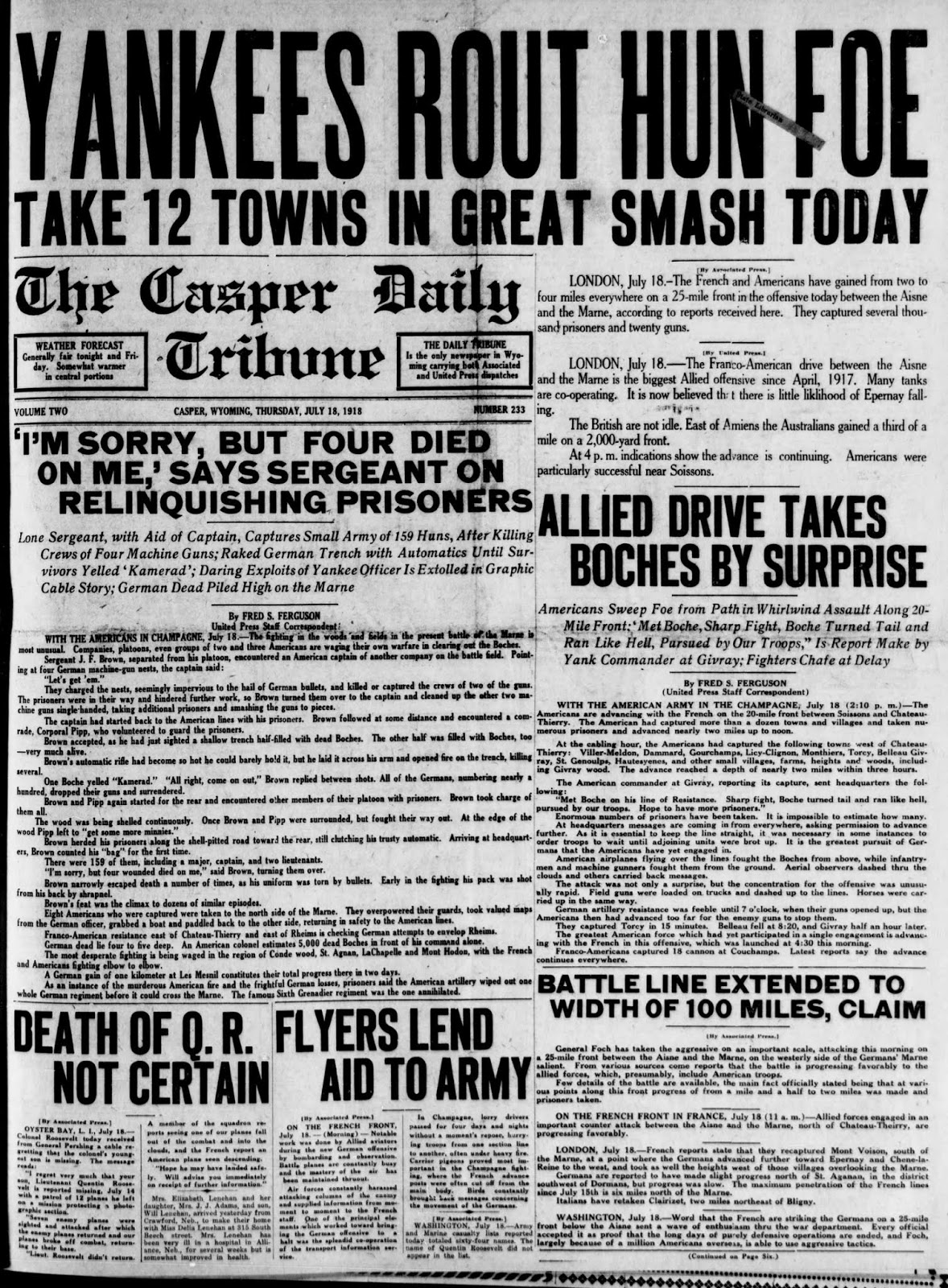On this day in 1918 the beginning of the final campaign of World War One began with the commencement of the Battle of Amiens.
"August 8, 1918", showing German troops marching into captivity.
Readers here have been reading about the combined Allied attack at Soissons. That counteroffensive could be regarded in some ways as the commencement of the Allied advances that would result in the November 1918 termination of the war, but it was in truth a local counteroffensive, on a massive scale, designed to reduce a salient that had been created by the German advances in their 1918 Spring Offensive. This was distinctly different in that it was the commencement of a large scale Allied campaign designed to do the very thing the German 1918 Spring; bring the war to a successful conclusion.
The plan to attack at Amiens was first proposed on July 23 after the successful initial stages of the Franco American assault of Soissons. Unlike Soissons, which had been a Franco American effort with British support, this effort would be a combined British Empire (Canadian, British and Australian) and French effort.
The initial assault plan followed on lessons that had been learned by the Australian assault at Hamel, which featured American combat troops as well, and which is regarded as the first real combined arms assault of the modern type. The assault featured large-scale use of armor and no pre assault bombardment, but instead immediate artillery support at the time of the attack. That attack commenced at 0420 in dense fog.
On this day, seven British divisions, supported in the north by the American 33d Division, launched that attack and achieved complete surprise. German reaction was quite slow as a result. By the end of the day Empire forces and French forces were both engaged and the Germans sustained 30,000 losses of all types. The losses were so severe that Eric Ludendorff later characterized the day as the "the Black Day the German Army."
Ludendorff's observation came not because of his lamenting the fate of the German's on the field, but because huge numbers of German soldiers simply gave up and surrendered. It was a Black Day, as the honor of the army, in his viewed, was tainted. And indeed, German moral was simply destroyed, although not just by this day alone. German troops refused to rally and yelled back to their officers that they were "prolonging the war". They also yelled at reserves coming into the line that they were "Blacklegs" (strike breakers). The German army had simply broken.
Hindenburg, on left as viewed, and Ludendorff.
Ludendorff's observation came not because of his lamenting the fate of the German's on the field, but because huge numbers of German soldiers simply gave up and surrendered. It was a Black Day, as the honor of the army, in his viewed, was tainted. And indeed, German moral was simply destroyed, although not just by this day alone. German troops refused to rally and yelled back to their officers that they were "prolonging the war". They also yelled at reserves coming into the line that they were "Blacklegs" (strike breakers). The German army had simply broken.
The attack continued the next two days, but without the spectacular successes of the first day. Allied advances continued but support problems developed with contested roads and with infantry units outrunning their artillery support. Marshall Foch, given the advances, requested that British Field Marshall Haig continue the offensive but Haig declined, given the problems he was facing of this type, and the operation halted on August 13.
By the end of the attack the German lines had significantly contracted and they had sustained a loss of 75,000 men which they could ill afford to lose. Tellingly, 50,000 of those losses were due to men surrendering. The Allies had lost 44,000 men, of which approximately half were British Empire forces and half French. The offensive didn't end the war, but it did indicate that something new was going on. The German Army, which had nearly won the war a few weeks over, has so strained its own soldiers that they were basically done. Only the extraordinary discipline present in the German military overall kept the war from concluding in the summer of 1918, not that the Allies were expecting that to occur.










